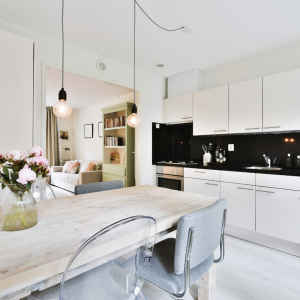Garden parties offer a delightful way to enjoy the outdoors while socializing with friends and family. Creative decorations, themed menus, and engaging activities can transform a simple gathering into a memorable celebration. With a little planning, anyone can host a charming event that leaves guests impressed.
Whether it’s a casual get-together or a formal affair, selecting a cohesive theme can enhance the party’s atmosphere. Incorporating elements like fresh flowers, twinkling lights, and comfortable seating fosters a welcoming environment. This attention to detail not only elevates the overall experience but also encourages guests to relax and enjoy the occasion.
From delightful culinary options to fun outdoor games, there are countless ways to make a garden party unique. Tailoring the event to suit personal style and the preferences of attendees ensures an enjoyable time for all. Embracing these ideas can inspire creativity and transform any garden into a vibrant social hub.
Choosing a Theme
Selecting a theme sets the tone for a garden party. It guides decorations, food choices, and activities. A well-chosen theme enhances the atmosphere and ensures all elements harmonize effectively.
Seasonal Themes
Each season offers unique characteristics perfect for inspiration.
- Spring: Emphasize blooming flowers with pastel colors, delicate table settings, and fresh, light dishes.
- Summer: Bright, vibrant colors can be paired with outdoor games and refreshing beverages. Sunflowers and tropical elements add a lively touch.
- Autumn: Utilize warm hues like oranges and browns. Incorporate pumpkins and rustic decor, focusing on hearty comfort foods.
- Winter: Transform the garden to reflect a cozy atmosphere, using white lights and evergreen plants. Warm drinks and a fire pit create an inviting environment.
Seasonal themes provide a framework, allowing for creativity while ensuring relevance to the time of year.
Color Palettes
A carefully chosen color palette can enhance the visual appeal.
- Monochromatic: Sticking with shades of one color creates elegance and cohesion. For instance, various shades of blue can evoke calmness.
- Complementary Colors: Pairing contrasting colors generates a lively atmosphere. For example, combining yellow and purple can make vibrant statements.
- Analogous Colors: Using colors next to each other on the color wheel provides harmony. Green, blue, and teal can evoke a serene garden feel.
Selecting complementary shades for tableware, florals, and linens can unify the party’s aesthetic and ensure visual consistency.
Literary Inspirations
Books often evoke rich imagery and themes. Here are a few ideas to consider:
- Classic Literature: Themes drawn from books like “The Secret Garden” inspire lush greenery and vintage decor. Consider classic tea party elements.
- Fairy Tales: Designing around tales like “Alice in Wonderland” can introduce whimsical elements, from mismatched tea sets to playful garden paths.
- Poetry: Choose themes inspired by nature poems, incorporating natural elements such as stones, flowers, and water features.
Literary inspirations can bring imaginative richness to the event, allowing guests to engage with the theme through storytelling and artful references.
Planning the Layout
An effective layout enhances the guest experience and creates a comfortable atmosphere. Considering how to best utilize garden space, arrange seating, and incorporate lighting is essential for a successful event.
Garden Space Utilization
Effective garden space utilization ensures that the area feels inviting and functional. Assess the garden’s natural features, such as trees, shrubs, and pathways. Main activity zones might include dining areas, lounging spots, and entertainment spaces.
Incorporate diverse textures and colors through flowers and plants to enhance visual appeal. A pathway can guide guests, while focal points like a decorative fountain or unique plant can draw attention.
Utilizing creative elements like arbors or pergolas can provide structure and shade. This enhances the garden’s charm while offering comfort on sunny days. Plan for flow so guests can move freely between areas without congestion.
These ideas work well when planning a party under the open sky in a garden. However, in regions where cold weather persists throughout the year, an open garden setting may become very uncomfortable for guests, especially for those who frequently organize gatherings.
What can be done in such a scenario? In cases like these, adding a sunroom at the heart of the garden can be a practical solution. This can not only allow the charm of a garden party to remain untouched but can also ensure warmth and comfort for everyone.
And, moreover, for those who frequently host house parties, this investment is a smart choice. Companies specializing in sunroom additions in Salem, NH, or other locations, can design a customized space that can seamlessly blend with the garden, and create the perfect setting for year-round celebrations.
Seating Arrangements
Seating arrangements play a crucial role in guest interaction and comfort. Mix seating types like tables, benches, and lounge chairs to cater to different preferences. Consider the number of guests and space available to avoid overcrowding.
Offer cozy arrangements that encourage conversation. Small groupings of seats can create intimate areas, while larger tables are ideal for communal dining.
Incorporate cushions and throws for added comfort and style. Having a designated area for children, with smaller seats or picnic blankets, can make the gathering more inclusive. Ensure guests can easily access seats and tables, particularly if food or drinks are served.
Lighting
Proper lighting transforms a garden party atmosphere as daylight fades. It is vital to create a balance between functionality and aesthetics. String lights or fairy lights can be draped across trees or around seating areas to provide a warm glow.
Lanterns on tables or along pathways add charm and guide guests safely. For a natural touch, consider candles placed in lanterns or on tables.
Use solar-powered lights for eco-friendly options that charge during the day. Ensure that lighting is adjustable to cater to different moods throughout the evening. The right lighting sets the tone, making the garden feel inviting and enchanting for guests.
Decorations and Aesthetics
Creating an inviting atmosphere is essential for a successful garden party. Thoughtful decorations and aesthetics enhance the outdoor experience. Carefully chosen elements can elevate the ambiance and delight guests.
Floral Decor
Floral arrangements serve as a focal point in garden party decor. Selecting seasonal flowers ensures freshness and vibrancy. Popular choices include hydrangeas, peonies, and sunflowers.
- Color Palette: Choose a color scheme that complements the garden. Soft pastels create a romantic vibe, while bright colors add energy.
- Arrangement Styles: Use a mix of centerpieces and scattered blooms. Grouping flowers in clusters can create variety and visual interest.
Incorporating greenery, such as ferns or ivy, adds depth and texture.
Table Settings
Table settings play a crucial role in establishing the party’s aesthetic. A well-set table should reflect the garden’s beauty.
- Table Linens: Utilizing tablecloths and runners in natural fabrics, like linen or cotton, complements the outdoor setting. Choose colors that align with the overall theme.
- Dishware and Glassware: Select elegant but durable dishware. Melamine or bamboo options are practical for outdoor use. Crystal or colored glassware can add sophistication.
Accessorizing with place cards and napkin rings personalizes the table and enhances the guest experience.
Centerpieces
Centerpieces must strike a balance between beauty and practicality. They should not obstruct conversation while still making a statement.
- Height Considerations: Use varying heights to create visual interest. Low arrangements encourage dialogue, while taller pieces add drama.
- Thematic Elements: Incorporate items that reflect the party theme or season, such as lanterns for a rustic feel or citrus fruits for a summer look.
Consider using short, wide vases for a modern twist. Grouping smaller items, like candles or fruits, can also create a unique centerpiece design.
Entertainment and Activities
A garden party can be elevated with thoughtful entertainment and engaging activities. This section focuses on enriching the guest experience through live music, interactive games, a vaping experience, and creative photo booths.
Live Music
Live music can infuse energy and ambiance into a garden party. Hiring a small band or a solo musician allows guests to enjoy a variety of tunes while mingling. Genres can range from acoustic to jazz, depending on the desired atmosphere.
For a more interactive option, consider having a karaoke machine set up. Guests can take turns performing their favorite songs, which can be a delightful way to break the ice and create memorable moments.
Having an outdoor sound system is essential. Soft music can provide background ambiance, while a more upbeat selection can encourage dancing later in the evening.
A Vaping Session
A vaping session with fellow guests can be a great way to add a laid-back and social element to a garden party. Creating a designated vape lounge with cozy seating, soft lighting, and an assortment of flavors can set the perfect atmosphere for relaxation and conversation.
To keep the experience hassle-free, it’s helpful to gets vapes with up to 10k puffs, which can ensure a steady supply without the need for constant replacements. A tasting station featuring a selection of nicotine strengths and flavors can make the experience even more interactive, and allow the guests to explore different options and discover new favorites together.
Games and Icebreakers
Games can serve as an exciting way to engage guests, especially those who may not know each other. Arrange simple lawn games like cornhole, giant Jenga, or bocce ball. These activities promote friendly competition and can be enjoyed by people of all ages.
Icebreaker games can also help guests connect. Choose activities that allow conversation starters, such as “Two Truths and a Lie” or “Human Bingo.” These encourage guests to mingle and share fun facts about themselves, enhancing the social atmosphere.
To ensure everyone participates, consider forming teams or pairings; this creates opportunities for guests to meet new people and foster connections.
Photo Booths
Setting up a photo booth can provide guests with a fun experience and lasting memories. Customize the booth with garden-themed props such as flower crowns, sunglasses, and more. A backdrop that fits the garden setting, like a floral wall or a simple fabric drape, enhances the visual appeal.
Consider using a digital camera or an instant camera for immediate prints. This allows guests to take home a tangible reminder of the event. Encourage guests to share their photos on social media by creating a unique hashtag, which helps gather all the memories in one place.
Offering a guest book where attendees can paste their pictures and leave messages adds a personal touch. This keepsake can be a cherished memento for the host long after the party ends.
Food and Beverage
Selecting the right food and beverages can enhance the garden party experience. Thoughtful choices in menu items, serving styles, and drink pairings can create a memorable atmosphere for all attendees.
Menu Ideas
For a garden party, the menu should reflect freshness and seasonality. Bite-sized appetizers work well, as guests can easily mingle while enjoying food. Consider options like:
- Caprese skewers with cherry tomatoes, mozzarella, and fresh basil.
- Mini quiches in various flavors such as spinach or ham and cheese.
- Fruit tarts featuring seasonal fruits.
A well-curated charcuterie board can also be stylish and inviting. Include a range of cheeses, cured meats, olives, and nuts. For a heartier option, grilled vegetable platters can add vibrant colors and flavors.
Serving Styles
Serving styles should facilitate social interaction and ease of access. A buffet setup can work effectively, allowing guests to serve themselves and customize their plates. Consider height variations for aesthetic appeal.
- Tiered stands can display desserts or appetizers attractively.
- Small tables for different food stations encourage guests to explore.
If a more formal approach is preferred, plated meals can be served by wait staff. This method adds a touch of sophistication but requires more planning and resources.
Drink Pairings
Beverages should complement the menu and enhance the outdoor setting. Classic options like lemonade or iced tea are refreshing choices. For adult beverages, consider:
- Wine selections, such as a chilled Sauvignon Blanc or a light Pinot Noir.
- Signature cocktails that reflect the season, like a gin and tonic with herbs.
Offering a non-alcoholic option is also important. Infused waters with fruits and herbs can be both refreshing and visually appealing. This variety ensures all guests find something they enjoy.
Invitations and Guest Management
Effective invitations and guest management set the tone for a memorable garden party. This includes thoughtful design, efficient RSVP tracking, and accommodating diverse guest needs.
Invitation Design
Creating an inviting design for invitations can enhance the excitement. Consider using floral themes or natural elements that reflect the garden setting.
Options for invitation styles:
- Digital Invitations: Eco-friendly and easy to distribute. Websites like Evite or Paperless Post offer many templates.
- Printed Invitations: High-quality cardstock with vibrant colors can create a tangible invitation that guests can display.
Ensure to include essential details like date, time, location, attire suggestion, and RSVP deadline. A personal touch, such as a handwritten note, can make the invitation feel special.
RSVP Tracking
Tracking RSVPs efficiently is crucial for managing the guest list. Using digital tools can simplify response collection.
Methods to consider:
- Google Forms: Easy to create and monitor responses.
- Event Management Apps: Tools like Eventbrite offer comprehensive features for tracking attendees.
Maintain a spreadsheet to organize responses. This helps in planning seating arrangements, catering needs, and other logistics. Confirmations can also help in following up with guests who haven’t responded.
Special Accommodations
Hosts should anticipate the need for special accommodations. This ensures all guests feel welcome and included.
Consider the following:
- Dietary Restrictions: Provide options for vegetarian, vegan, gluten-free, and other dietary needs. Request this information when guests RSVP.
- Accessibility Needs: Ensure the venue is accessible for guests with mobility issues. This includes pathways, seating arrangements, and restrooms.
Taking these steps shows consideration for guests’ comfort, enhancing their overall experience at the garden party.
Logistics and Preparations
Effective planning is essential for a successful garden party. This section outlines the necessary equipment, considerations for weather, and coordination on the day of the event.
Equipment Rentals
When organizing a garden party, determining the right equipment is crucial. Renting items such as tables, chairs, and tents can enhance the gathering significantly.
One can consider the following rentals:
- Tables: Round or rectangular, based on seating needs.
- Chairs: Folding chairs are practical for outdoor settings.
- Tents: Provide shelter from the elements, particularly sun and rain.
Additionally, includes essentials like dinnerware, decorations, and lighting. It is important to confirm rental orders several days before the event to avoid last-minute issues. Check delivery and pickup times to streamline logistics.
Weather Contingencies
Weather plays a vital role in outdoor events. Having contingency plans can mitigate potential problems.
- Backup Plans: Consider renting a large tent as a safeguard against rain.
- Heating/Cooling Options: Heaters for cooler evenings or fans for hot days can enhance comfort.
Monitoring weather forecasts in the days leading up to the event helps in making informed decisions. It’s wise to have alternative indoor or covered spaces planned. Communicate with guests regarding any changes due to weather conditions for smooth management.
Day-of Coordination
Coordination on the day of the event ensures that everything runs smoothly. Establishing a timeline is essential for managing the flow.
Important considerations include:
- Setup Schedule: Allow adequate time for setting up tables, decorations, and equipment.
- Staffing: Designate roles for helpers, whether it’s greeting guests, serving food, or managing activities.
Having a checklist can aid in covering all tasks. Regular communication among team members helps to adjust on the fly if needed. Being prepared for any last-minute changes is vital for a seamless experience.




